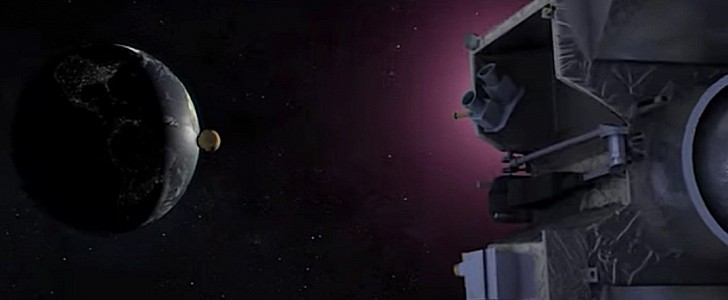Most of the spacecraft we humans send into space for research purposes never come back. That’s because they’re meant to stay at their place of destination forever or be destroyed for the sake of science. But not OSIRIS-Rex.
This spacecraft was launched all the way back in 2016, heading for an asteroid called Bennu with a clear purpose in mind: steal a part of it, and return it home so that humans can have a look.
OSIRIS-Rex started heading home in 2021, and we know it’s bringing back 60 grams of Bennu regolith. It won’t reach us until September 24, 2023, and when it does, it won’t descend into our planet’s atmosphere to deliver its precious cargo, but will drop it from high up.
That’s right, OSIRIS-Rex will not land. It will come close to Earth, and when the moment is right, will drop a capsule containing the precious alien cargo. The capsule is expected to land at the Air Force's Utah Test and Training Range in the Great Salt Lake Desert.
The spacecraft will then head out into space once more, this time targeting asteroid Apophis, a piece of floating rock considered of particular interest to humans given its potential of striking us.
Given we’re less than a year away from the moment when OSIRIS will reach home, NASA scientists have begun adjusting the spacecraft’s trajectory and will continue to do so for the next months, in a bid to get the drop timing just right.
Back in September, scientists changed the ship’s trajectory for the first time since it left Bennu, and that correction puts OSIRIS on a course that would bring it 1,367 miles (2,200 km) from Earth. Further burns would be needed, as the thing must come to just 155 miles (250 km) from the surface for the drop to be successful.
An animation of how that’s supposed to go was put together by NASA and you can have a look at it in the video below. The second clip shows OSIRIS-Rex’s trip through space on its way back.
OSIRIS-Rex started heading home in 2021, and we know it’s bringing back 60 grams of Bennu regolith. It won’t reach us until September 24, 2023, and when it does, it won’t descend into our planet’s atmosphere to deliver its precious cargo, but will drop it from high up.
That’s right, OSIRIS-Rex will not land. It will come close to Earth, and when the moment is right, will drop a capsule containing the precious alien cargo. The capsule is expected to land at the Air Force's Utah Test and Training Range in the Great Salt Lake Desert.
The spacecraft will then head out into space once more, this time targeting asteroid Apophis, a piece of floating rock considered of particular interest to humans given its potential of striking us.
Given we’re less than a year away from the moment when OSIRIS will reach home, NASA scientists have begun adjusting the spacecraft’s trajectory and will continue to do so for the next months, in a bid to get the drop timing just right.
Back in September, scientists changed the ship’s trajectory for the first time since it left Bennu, and that correction puts OSIRIS on a course that would bring it 1,367 miles (2,200 km) from Earth. Further burns would be needed, as the thing must come to just 155 miles (250 km) from the surface for the drop to be successful.
An animation of how that’s supposed to go was put together by NASA and you can have a look at it in the video below. The second clip shows OSIRIS-Rex’s trip through space on its way back.









